Police Forces That Kept Order In Ancient Streets
C0nny Waters - AncientPages.com - The first known police force was established in 400 BC in Athens, Greece.
According to accounts from speech writer in Ancient Greece, Andocides, a Greek statesman and one of the ten Attic orators, Aeschines, the first police force in ancient Greece, consisted of publicly-owned Scythian slaves, the so-called Scythian Archers.
Historical evidence shows that in ancient Greece, sporadically, police authorities began to form and excel, mainly in Athens, where publicly enslaved people were used as a police force.
Three hundred of them were employed by magistrates for crowd control, maintaining law and order in the city's streets, and maintaining order during political meetings.
This police force also assisted with dealing with criminals, handling prisoners, and making arrests.
Equipped with bows and arrows, the enslaved people kept order on the streets of Athens. They had the power to arrest and monitor prisoners. However, investigating and detecting crimes was still reserved for Athens's free citizens.
Following the concept of the police force, Augustus (27 BC-AD 14) created the so-called Praetorian Guard, an organization to protect the emperor and be his bodyguards. They enforced his laws and maintained public order, which was of such a high level that it remained in effect until the decline of the great Roman empire.
During the Middle Ages, the European legal system was in the hands of local lords and nobles responsible for maintaining order in their districts.
Appointed by the king, these district noblemen were both executive and judiciary in their respective fields.
Left: In the Roman cities, small forces of gendarmes, often recruited from slaves, acted under the direction of civilian magistrates. But elsewhere it was the army itself that kept the peace; and military units were stationed at such strategic points as river-crossings and road-centres. Right: The ‘hermandades’ initially began to form in Andalusia,Spain in the 12th century.
Each noble usually appointed a constable official whose duties included keeping the peace and arresting and guarding criminals.
For serious crimes, however, the prisoner had the right to raise their case in the Royal Courts.
The 'hermandades' (in Spanish, 'brotherhood') initially began to form in Andalusia in the 12th century. They were one of many voluntary and peacekeeping association of armed individuals, formed in Spain especially in Castile, during the 13th, 14th, and 15th centuries to maintain public order, resist the nobles' depredations, and, later, exercise general police functions.
The Santas Hermandades of medieval Spain were formed to protect pilgrims on the Camino de Santiago (Pilgrim on the Way of St. James). Image credit: Roland zh - PublicDomain
A modern European Police appeared for the first time in 1667 when King Louis XIV of France established a police force consisting of 44 inspectors under the official name - the "Lieutenant General of Police."
Already two years later, the system was applied to all major cities in France. In 1829, the French officers were the first to receive uniforms!
In 1663 the city of London began paying watchmen (generally older men who could not find other work) to guard the streets at night. Until the end of the 18th century, the guards and a small group of constables represented the only form of policing in the city.
Updated on October 20, 2022
Written by Conny Waters – AncientPages.com Staff Writer
Copyright © AncientPages.com All rights reserved. This material may not be published, broadcast, rewritten or redistributed in whole or part without the express written permission of AncientPages.com
Expand for referencesMore From Ancient Pages
-
 Giant Egyptian Pyramids Hidden Beneath The Sand Dismissed By Egyptologists Without Investigation!
Archaeology | Jun 29, 2020
Giant Egyptian Pyramids Hidden Beneath The Sand Dismissed By Egyptologists Without Investigation!
Archaeology | Jun 29, 2020 -
 Unexplained Lights Over English City Reported By Police May Have A Deeper Meaning
Featured Stories | Dec 11, 2019
Unexplained Lights Over English City Reported By Police May Have A Deeper Meaning
Featured Stories | Dec 11, 2019 -
 Hidden Records Of A Civilization Frozen In Time – Mysterious Time Capsules
Featured Stories | Aug 31, 2020
Hidden Records Of A Civilization Frozen In Time – Mysterious Time Capsules
Featured Stories | Aug 31, 2020 -
 On This Day In History: Joan Of Arc Enters Orleans, The City Besieged By The English – On Apr 29, 1429
News | Apr 29, 2016
On This Day In History: Joan Of Arc Enters Orleans, The City Besieged By The English – On Apr 29, 1429
News | Apr 29, 2016 -
 Mysterious Ancient Shapeshifters Who Guided Humans And The Battle Of The Gods Described In Sacred Texts And Myths
Ancient Mysteries | Oct 27, 2021
Mysterious Ancient Shapeshifters Who Guided Humans And The Battle Of The Gods Described In Sacred Texts And Myths
Ancient Mysteries | Oct 27, 2021 -
 What Was The Extreme Ritual Of Sokushinbutsu?
Ancient Traditions And Customs | Jun 20, 2018
What Was The Extreme Ritual Of Sokushinbutsu?
Ancient Traditions And Customs | Jun 20, 2018 -
 Pharaoh Apries – Was The Betrayed Egyptian King Murdered By His Own People?
Featured Stories | Jun 30, 2021
Pharaoh Apries – Was The Betrayed Egyptian King Murdered By His Own People?
Featured Stories | Jun 30, 2021 -
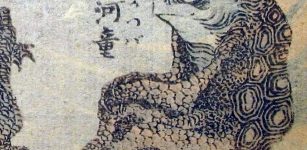 Mystery Of The Kappas That Moved Swiftly Over The Waters Or Across The Sky
Japanese Mythology | Jun 16, 2014
Mystery Of The Kappas That Moved Swiftly Over The Waters Or Across The Sky
Japanese Mythology | Jun 16, 2014 -
 Archaeologists Solve A 1,000-Year-Old Mystery Mentioned In Norse Sagas
Featured Stories | Oct 10, 2024
Archaeologists Solve A 1,000-Year-Old Mystery Mentioned In Norse Sagas
Featured Stories | Oct 10, 2024 -
 Human Migration Out Of Africa To Middle East Through Corridors Provided By Monsoons
Archaeology | Nov 27, 2019
Human Migration Out Of Africa To Middle East Through Corridors Provided By Monsoons
Archaeology | Nov 27, 2019 -
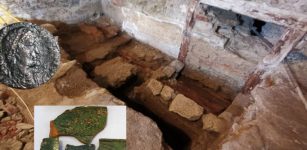 4th-Century Roman Coin And Pub-Like Structure With Heating System Excavated In Slovakia
Archaeology | Aug 11, 2020
4th-Century Roman Coin And Pub-Like Structure With Heating System Excavated In Slovakia
Archaeology | Aug 11, 2020 -
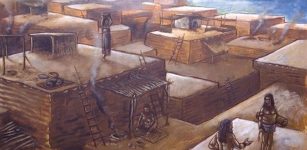 Çatalhöyük – 9,000 Years Ago: Overcrowding, Infectious Diseases, Violence And Environmental Problems Of Early Farmers
Archaeology | Jun 18, 2019
Çatalhöyük – 9,000 Years Ago: Overcrowding, Infectious Diseases, Violence And Environmental Problems Of Early Farmers
Archaeology | Jun 18, 2019 -
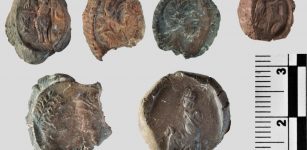 1,000 Ancient Sealings Linked To Graeco-Roman Pantheon Among Finds In Unidentified Church In Turkey
Archaeology | Dec 12, 2017
1,000 Ancient Sealings Linked To Graeco-Roman Pantheon Among Finds In Unidentified Church In Turkey
Archaeology | Dec 12, 2017 -
 Anartes: Forgotten Celtic Tribe And The Hercynian Forest With Strange Animals
Featured Stories | Jun 18, 2024
Anartes: Forgotten Celtic Tribe And The Hercynian Forest With Strange Animals
Featured Stories | Jun 18, 2024 -
 Beavers Had A Big Influence On How Stone Age People Lived
Archaeology | Oct 18, 2023
Beavers Had A Big Influence On How Stone Age People Lived
Archaeology | Oct 18, 2023 -
 Rosicrucians’ Secret Knowledge Of Atlantis, Pyramids And Extraterrestrial Visitations
Ancient Mysteries | Apr 17, 2017
Rosicrucians’ Secret Knowledge Of Atlantis, Pyramids And Extraterrestrial Visitations
Ancient Mysteries | Apr 17, 2017 -
 On This Day In History: Declaration Of Independence Of The Mexican Empire Is Drafted – On Sep 28, 1821
News | Sep 28, 2016
On This Day In History: Declaration Of Independence Of The Mexican Empire Is Drafted – On Sep 28, 1821
News | Sep 28, 2016 -
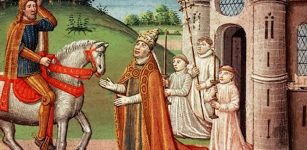 Medieval Warhorses Were Pony-Sized And Much Smaller Than Previously Thought
Archaeology | Jan 11, 2022
Medieval Warhorses Were Pony-Sized And Much Smaller Than Previously Thought
Archaeology | Jan 11, 2022 -
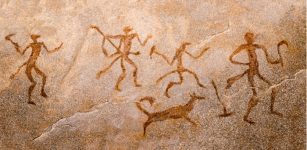 Hunter-Gatherer Genes Helped Early European Farmers Survive Disease – New Study
Archaeology | Mar 24, 2023
Hunter-Gatherer Genes Helped Early European Farmers Survive Disease – New Study
Archaeology | Mar 24, 2023 -
 Kingdom Of Mitanni: Forgotten For Millennia But Once Great Power Of Ancient West Asia In 2000 BC
Civilizations | Jun 20, 2023
Kingdom Of Mitanni: Forgotten For Millennia But Once Great Power Of Ancient West Asia In 2000 BC
Civilizations | Jun 20, 2023



